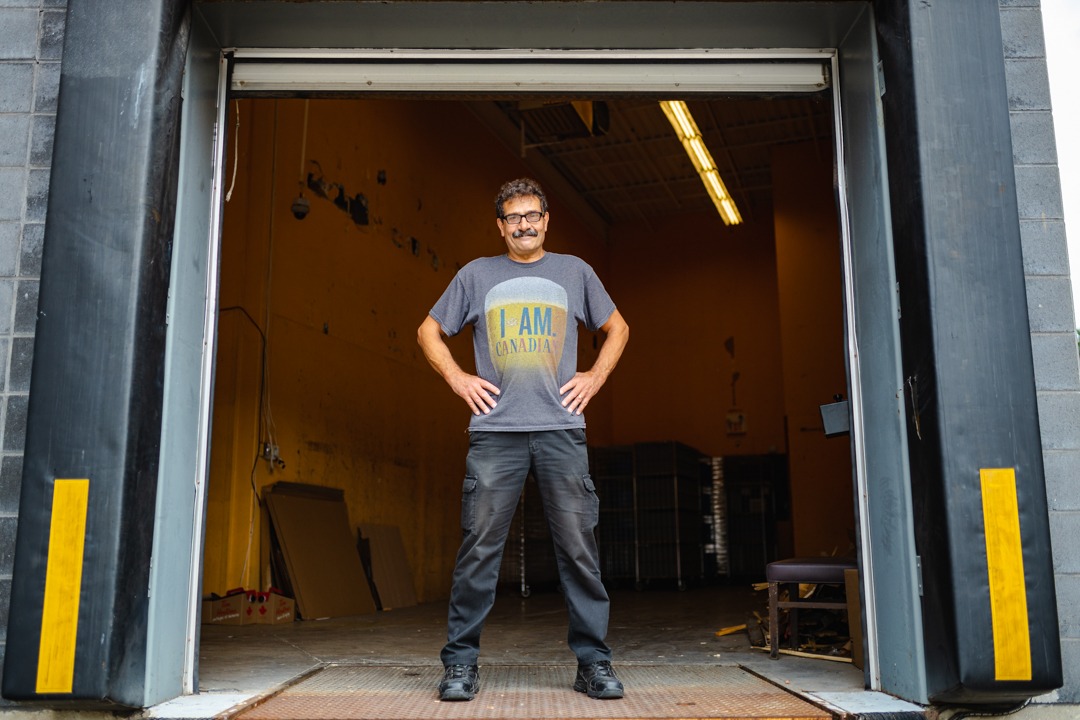
Facing down COVID-19: How Hamilton’s largest hospital system responded to demands for PPE
It was a mission never experienced before in the history of Hamilton Health Sciences (HHS).

Robin Simons, director of procurement and supply chain
“Early in the pandemic, I remember being on a phone call at 11 o’clock on a Friday night trying to negotiate one million N95 masks,” recalls Robin Simons, HHS’ procurement and supply chain director.
“This quickly became a normal way of life – late night and weekend calls with vendors, sharing information with our hospital peers, and leveraging every contact we ever made in our careers. We quickly realized the supply chain was breaking and we needed to look to non-traditional vendors to support our needs.”
Personal protective equipment (PPE) such as masks, gloves, gowns, face shields, caps and shoe covers were critically important in fighting the COVID-19 virus. There were so many unknowns about the virus at the time, but keeping healthcare workers and staff safe was the number-one priority.
But the pandemic created another global crisis: it broke the supply chain world-wide and made sourcing PPE and other critical supplies a serious challenge.
Supply, what?
Prior to the pandemic, few people thought much about supply chains and how the flow of goods and services impacted their daily lives. It’s one of those things that’s taken for granted until a once-in-a-lifetime event like COVID comes along and disrupts the world.
Remember the ‘great toilet paper shortage of 2020’? That happened because people began panic-buying and hoarding, and the supply chain simply couldn’t keep up with the increased demand.
The same was true for PPE, except a shortage would have more severe consequences than toilet paper. And people weren’t hoarding it. The issue was far more complex.
So what happened?

Boxes of made-in-Canada face shields
When the pandemic hit, HHS – like other organizations – experienced challenges accessing the large volumes of supplies needed to meet emerging guidelines for protecting front-line workers with the highest-quality equipment. The virus was new and information was scarce. At that point, the most protective equipment was considered the safest.
Workplaces everywhere were trying to get supplies from manufacturers, who were either working as quickly as they could to keep up with demand, or didn’t have the raw materials they needed from other areas of the world to make their product. In many cases, border and travel restrictions prevented products from coming into the country.
To complicate matters further, manufacturers of these products were experiencing COVID outbreaks within their own workforces and were short staff.
With all of these factors at play, HHS continued to carefully manage its existing stock while also aggressively sourcing new supplies to ensure the hospital didn’t run out.
Next steps
In the spring of 2020, PPE suppliers faced shortages of raw materials and challenges with normal supply chain distribution systems. The central organization that would supply PPE to hospitals in our area was no exception. So HHS had to get it themselves.

Annette Lacivita, manager of supply chain logistics
“Supply was unpredictable and allocations across hospitals were based on historic use vs. pandemic-influenced demand,” says manager of HHS supply chain logistics, Annette LaCivita. “We saw a decline in the fill rates on orders and like all hospitals, began PPE conservation and sourcing strategies.”
With only some supplies in the pandemic storage repository, the procurement and supply chain team had to pivot very quickly to stock up on what was needed. This included finding supplies that were made locally, or that could be made locally.
By summer 2020, HHS and other hospital systems began sourcing alternate N95s (a type of respirator with a close facial fit and efficient filtration of airborne particles) but there was another problem – money.
Prices soared
What happens when supply goes down and demand goes up? Prices soar.
“Prices were enormous and in some cases over 120 per cent higher than we were previously paying,” says Simons. “Not only were we dealing with supply constraints where we simply couldn’t get anything, prices were enormously high. We also had to ensure none of the products we were considering were counterfeit and we needed to validate that they were coming from legitimate suppliers.”
The procurement and supply chain team had thousands of suppliers, distributors and resellers reaching out to them, plus they received numerous donation offers.
“It was great that people in the community were so generous and came forward with these opportunities,” says Simons, “but the products had to be vetted to ensure they met health care and HHS standards. This was another way our teams worked together to get supplies where they were needed most.
Partnerships bloomed

Boxes of 3M N95 masks
HHS was contacted by a number of local companies who decided to retool — or adapt — their manufacturing operations to make PPE for hospital use. It was a win-win. The decision to create PPE provided businesses with the opportunity to keep workers employed and their plants operating, while helping their local hospital care for patients.
It also gave hospitals an opportunity to collaborate with local partners.
The biggest opportunity to pivot to locally-made goods was for N95 masks. HHS’ original supplier was based in the United States and unable to ship masks here due to border closures.
Several Ontario-based manufacturing companies shifted their models to respond to the needs of the healthcare sector. More recently, with assistance from the provincial government, one of the companies called 3M is producing a N95 model mask locally in Brockville, Ontario. These new universal-fit N95 masks are providing a sustainable supply that will help relieve some of the pressures experienced by HHS.
Peer to peer collaboration
“Throughout the pandemic, hospitals came together to share strategies, vendor and product information, and their own experiences like never before,” says Simons. “We reached out to hospitals across the province to see how they were conserving PPE, what suppliers they were using, and how much supply they were keeping on hand.”
This collaboration and communication across hospital networks has been crucial in creating a strong support network and strategic alignment not only in the Hamilton-Niagara-Brant region, but also across the GTA and the province.
Conserving PPE
HHS worked with its employee health services and infection prevention and control team to employ conservation methods supporting sound use of PPE supplies until more arrived. At the same time, it was important for healthcare workers to know they were not at risk using existing supplies. Communication and education were key elements in ensuring staff felt safe and had confidence in their protective equipment.
Some conservation methods included creating guidelines around roles that required N95 masks versus rated disposable masks for lower risk areas, and practicing extended use for N95s.
At one point, HHS and many other hospitals looked into the possibility of cleaning and reusing N95s, as recommended in some provincial directives. In the end, this strategy was never needed because HHS was able to meet its supply demands.
Temporary warehouse

Joe Makadi, Materials Handler, runs the temporary HHS PPE warehouse. He came back from retirement to help during the pandemic.
Typically, HHS managed its own inventory, placing orders directly with suppliers and receiving those orders as needed.
To accommodate extra pandemic supplies, LaCivita and her team set up a temporary warehouse to store PPE and hired new staff to manage shipments. Because storage space was so limited at the sites, products were shipped every day from the warehouse to the hospitals in need. This warehouse closed in March 2021. Pandemic inventory has since been moved to a permanent location.
Lessons learned
Everything is 20/20 in hindsight — except for 2020 itself. That is still a bit blurry.
Moving forward, Simons and her team are making a plan should something like this happen again.
“We had all of our eggs in one basket with a central supplier of PPE,” says Simons. “Understanding now the many factors that can adversely affect our supply chain, we’ve determined we have to keep our own separate pandemic warehouse to store PPE as well as respiratory therapy items.”

HHS now has its own warehouse to store PPE and respiratory therapy items.
Throughout the pandemic, HHS was continuously introducing new product because it had to take what it could get. “Now we have the luxury of hindsight,” says Simons. “Having that easily-accessible pandemic supply in storage will provide confidence for our staff, knowing they are using high-quality, standardized products.”
The team also pledges to leverage locally manufactured products where possible, as well as ensuring that stock is rotated and products haven’t expired.
“It’s true inventory management,” says Simons. “We’re not out of the woods yet and it will be quite some time before we have confidence in our supply chains, but we are beginning to see glimmers of hope.”
A team effort
If you ask anyone working in healthcare about spring 2020, they will tell you it was a whirlwind.
“It was exhausting, but the resiliency and commitment shown by my team was incredible,” says LaCivita. “The supply chain continues to be extremely demanding. As we look back on that remarkable time, and at new challenges, we’ve all learned the importance of caring for our teams and ourselves.”
“Everybody on this team stepped up to give support wherever it was needed, including working extra hours,” adds Simons. “They didn’t do this because it was their job. They did it because they cared.”




